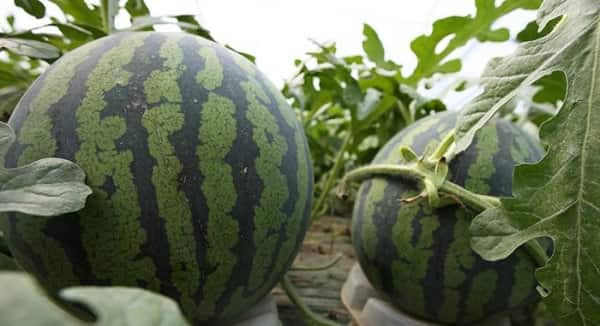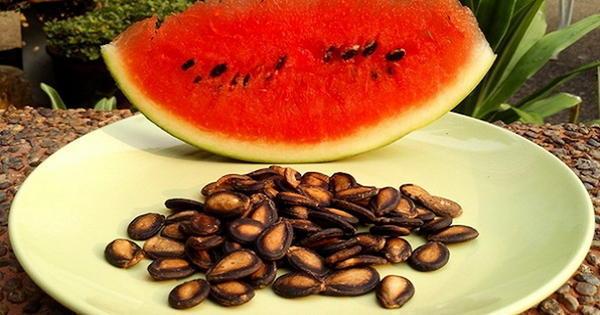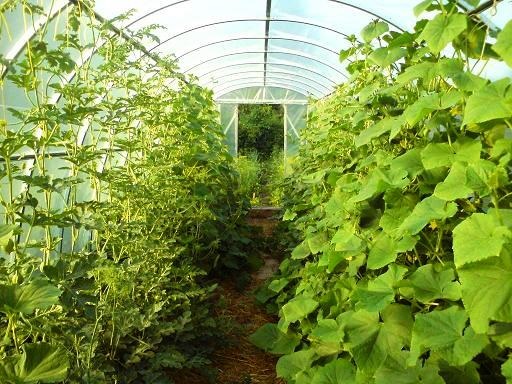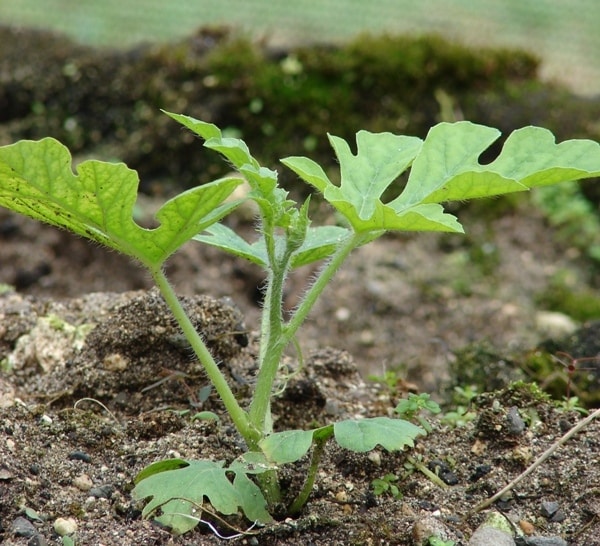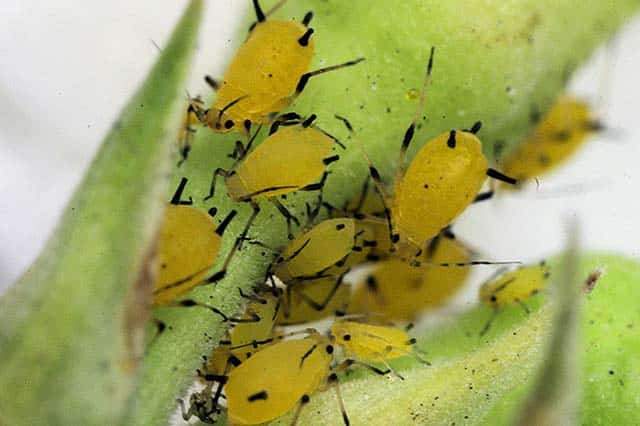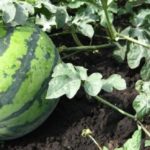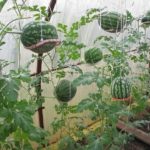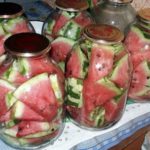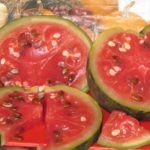Many gardeners living in the Moscow region are engaged in growing watermelons. In this region, melons and melons are planted both in greenhouses and outdoors. It is recommended that you familiarize yourself in advance with how to properly grow watermelon in the Moscow region in order to get a lot of high-quality harvest.
- What varieties grow best in the Moscow region
- Sugar
- Maristo
- Baraka
- Erken
- Growing methods
- Seedlings
- Seeds
- How to plant and care for seeds correctly
- Outdoors
- In greenhouse conditions
- Rules for planting and caring for seedlings
- For open ground
- For the greenhouse
- Diseases and pests of watermelons
- Determining the ripeness of a watermelon
- Collection and storage rules for watermelon
- Conclusion
What varieties grow best in the Moscow region
Before you start planting and growing melons, you need to familiarize yourself with the most suitable varieties for the Moscow region. Breeders have developed several watermelon varieties that are adapted to the climate of this particular region.
Sugar
Gardeners often plant Sugar watermelon on their plots, which copes well with temperature changes. The variety has an average ripening time of 60-70 days. Ripe watermelon berries are covered with a dense greenish skin, which protects the pulp from damage. A special feature of the variety can be considered its taste, characterized by a pleasant sweetness.
Maristo
This variety is popular among gardeners who prefer to plant varieties with early ripening. Maristo fruits will fully ripen within 45-50 days. The advantage of the plant is its resistance to anthracnose and other common diseases, which often lead to the death of watermelon seedlings. When growing Maristo, at least 25 kilograms of juicy fruits are collected from one bush.
Baraka
Among the high-yielding varieties with rapid ripening of berries, Baraka watermelons are distinguished. They grow well in the Moscow region and other nearby regions. Baraka is distinguished by its large fruits, weighing more than ten kilograms. They are covered with a dense dark skin, under which there is a sweet and watery pulp. Baraka independently copes with the pathogens of fusarium and aphids.
Erken
The earliest varieties of watermelons include Erken, the berries of which ripen within three weeks after planting the seedlings in the garden. The advantages of the variety include its unpretentiousness, thanks to which even inexperienced gardeners can grow Erken.
Ripe watermelon fruits weigh at least 12 kilograms.They are dark green in color and have a sweetish taste.
Growing methods
Before planting melons, it is recommended to familiarize yourself with the methods of growing them. There are two main ways in which you can grow watermelon bushes.
Seedlings
People who are interested in watermelons often grow them using seedlings. Its main advantage is considered to be faster ripening of fruits compared to seed cultivation in the garden.
Another plus is that plants grown by seedlings are better protected from diseases and pests.
To obtain strong watermelon seedlings, seed material is sown in pots or plastic cassettes filled with soil and fertilizers. Within a month, the seedlings will grow to 5-7 centimeters, and they can be transplanted into a vegetable garden or greenhouse.
Seeds
Gardeners who do not want to waste time replanting seedlings immediately plant watermelons in the garden. When using the seedless method, all seeds are soaked in advance in a solution of manganese and water so that they germinate better and are not susceptible to disease. Then the treated seed is dried and planted in the ground. To prevent planted seeds from being damaged by frost, they are buried to a depth of 15-17 centimeters. For additional protection, all beds with planted seeds can be covered with plastic film.
How to plant and care for seeds correctly
Gardeners who prefer to grow melons using the seed method should familiarize themselves with how to do it correctly.
Outdoors
Some residents of the Moscow region prefer to plant watermelons in the garden. To do this, choose an area with good lighting and protection from strong gusts of wind.The most suitable place would be a place where cabbage, potatoes, tomatoes or radishes were previously grown. Also, when choosing a site at the dacha, pay attention to the soil, which should be sandy loam.
After choosing a site, they begin pre-sowing soil preparation. 10-15 kilograms of humus and wood ash are added to it. The garden is then treated with a mixture made from superphosphate and sulfate.
When site preparation is completed, planting begins. To do this, rows are marked along which holes 15-20 centimeters deep are made with a hoe. Two seeds are thrown into each hole, after which they are sprinkled with earth and watered. To grow strong bushes, all rows are covered with film or sprinkled with straw at night.
In greenhouse conditions
Growing in a greenhouse is popular among gardeners who want to protect seedlings as much as possible from night frosts. For planting plants, greenhouses with a height of more than two meters are used. A low greenhouse for watermelons is not suitable, since the lashes are grown indoors in a vertical position.
Before planting a watermelon, the soil is prepared. To do this, beds are marked along the greenhouse, into which fertilizing in the form of manure is added in advance. Then holes are made in the beds and filled with superphosphate liquid. After this, 1-2 seeds are placed in the holes and covered with soil.
Rules for planting and caring for seedlings
Planting and growing watermelons using the seedling method causes difficulties for some gardeners. Therefore, it is necessary to familiarize yourself in advance with the peculiarities of growing melons and melons in this way.
For open ground
Planting watermelons in open ground carried out 35 days after sowing the seeds. Most often, planting dates coincide with the end of May or the beginning of summer.To transplant seedlings, holes 30-40 centimeters deep are dug in the area, into which the seedlings are carefully placed.
Planted seedlings must be constantly looked after so that they grow better. A bush must be formed, in which all additional shoots are removed and the main stem is pinched above the sixth leaf. Also, seedlings are watered regularly so that the soil does not dry out. In summer, watering is done 2-3 times a week.
For the greenhouse
Planting seedlings in a greenhouse is no different from planting in open ground. Caring for watermelon bushes in a greenhouse consists of regular fertilization of plants. The bushes are fed with a solution made from ammonium nitrate. Organic fertilizers are also used, which increase the yield of watermelons. To do this, the bushes are watered with liquid from bird droppings or manure.
To effectively care for watermelon seedlings, you need to monitor the temperature in the greenhouse. Temperatures at night should not fall below 20 degrees, and during the day - below 30.
Diseases and pests of watermelons
Among the most dangerous diseases and pests are:
- Anthracnose. This disease appears as a result of exposure of seedlings to a dangerous fungus. Signs of anthracnose begin to appear if watermelons are grown in high humidity. First, the upper part of the bushes turns yellow and becomes larger. Then ulcerative wounds appear on the stems, and the fruits become deformed. To get rid of the symptoms of anthracnose, you need to use Bordeaux mixture.
- Rot. Pathology is activated due to temperature changes and waterlogging of the soil. The development of rot leads to compaction of the root system and its gradual cracking.For prevention, it is recommended to regularly fill the bushes with warm water and chalk solution.
- Wireworm. These bugs damage the roots of seedlings, which leads to their partial or complete drying out. Getting rid of wireworms is quite difficult. The only effective method of control is the use of traps made from jars of chopped carrots and beets.
- Aphid. Such an insect is considered a dangerous pest that can quickly suck the juice from seedlings and destroy them. Often, aphid colonies appear in the summer or late spring. To fight the insect, you need to periodically clear the area of weeds and remove infected plants.
Determining the ripeness of a watermelon
Before harvesting, you need to familiarize yourself with determining the degree of its maturity.
To make sure that the fruits are ripe, you need to pay attention to their size. Ripe watermelons cannot be too small. Their weight should be about 5-10 kilograms. The ripeness of a plant is also determined by its color.
Ripe watermelons are dark green in color. If the fruits are too light, it is better not to pick them, as they are not yet fully ripe. Ripe watermelon berries have a hard surface. A soft crust indicates that the crop is already overripe, and it must be picked immediately before it begins to rot.
Collection and storage rules for watermelon
If agricultural techniques were fully followed when growing watermelons, the ripened fruits will be stored well for six months. For longer storage, it is recommended to plant only late varieties that are resistant to temperature changes and transportation.
To store watermelons, choose rooms in which the air temperature does not exceed ten degrees Celsius.You also need to take care of good air circulation and low lighting.
Conclusion
Many gardeners in the Moscow region are engaged in growing watermelons. Before you start planting, you should familiarize yourself with the best varieties for this region and the characteristics of growing melons.

